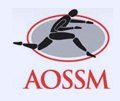Posterolateral Corner Reconstruction
Posterolateral corner injury is damage or injury to the structures of the posterolateral corner. The structures of the posterolateral corner include the lateral collateral ligament, the popliteus tendon, and the popliteo-fibular ligament. Injuries to the posterolateral corner most often occur with athletic trauma, motor-vehicle accidents, and falls. An isolated injury to the posterolateral corner is rare. Posterolateral corner injuries often occur in combination with injuries to the cruciate ligaments, the anterior cruciate ligament (ACL) and the posterior cruciate ligament (PCL).
Diagnosis
The dial test where you doctor will determine the rotation of the knee by turning the foot outwards is the most important test to diagnose posterolateral corner injury. If there is increased rotation, it is indicative of an injury to the posterolateral corner.
Depending on the severity and extent of injury, PLC injuries can be divided into grade 1, 2 or 3. Grade 1 to 2 injuries show 8mm opening and grade 3 injuries show more than a 10 mm opening. Treatment of a posterolateral corner injury depends on the severity of the injury. Grade 1 and grade 2 injuries may be treated non-surgically with a knee brace for 8 to 12 weeks. Surgical PLC reconstruction is required for grade 3 injures and combination injuries.
Procedure
The procedure is performed under general anesthesia. The surgery involves an open incision over the outer aspect of the knee. A graft, for the reconstruction of the damaged ligaments, can be taken either from the patient’s own body (autograft) or from the donor (allograft). The autograft commonly used for PLC reconstruction is obtained from the hamstring tendon of either the leg undergoing the surgery or from the other leg. A small incision is made over the inner aspect of the knee to harvest the graft (hamstring tendon). The graft is then placed through the head of the fibula (the smaller bone of the leg) and secured to the outer aspect of the femur (screws). The wounds are then closed with sutures and dressed.
Depending on the severity of the injury, a PLC reconstruction can be combined with an anterior cruciate ligament (ACL) or a posterior cruciate ligament (PCL) reconstruction.
Return to full activities usually is 6-12 months after surgery.
Risks and Complications
Possible risks and complications associated with PLC reconstruction include:
- Numbness
- Infection
- Blood clots (Deep vein thrombosis)
- Nerve and blood vessel damage, especially peroneal nerve injury
- Failure of the graft
- Loosening of the graft
- Decreased range of motion
- Pain in the knee
- Repeat injury to the graft













